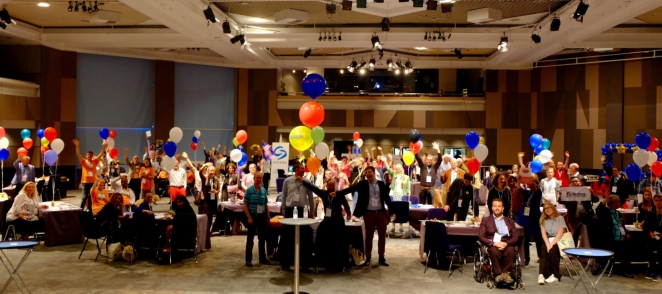It’s 2023 and the events industry is still struggling with inclusion. Diversity, accessibility and inclusivity may seem to be on everybody’s lips but speaker lineups continue to feature the same set of perspectives and event environments repeatedly shut out large groups of people. There’s a gap between intent and action and it’s swallowing up progress and innovation.
So why is diversity and inclusion important in the events space and how can organisations run a genuinely inclusive event?
The importance of diversity and inclusion

After George Floyd’s murder there was a surge of activity in the events space around diversity, inclusion and anti-racism. Many organisations were keen to prove they cared and avoid accusations of racism and discrimination. But the fear is these short-term actions weren’t necessarily backed by long-term planning.
Unless organisations are willing to establish connections beyond their obvious, immediate circles, change the way they run events, and continually interrogate their processes, we risk reverting to a pre-pandemic state of affairs and settling back into old patterns.
The key to genuine, long-lasting inclusion begins with an attitude overhaul. Diversity and inclusion work shouldn’t be viewed as a way to escape public censure but crucial in improving the quality and richness of what your organisation and industry is offering.
Hearing the same perspectives on the same topics doesn’t add new opportunities for learning or providing kindling for new ideas. But amplifying a diverse range of voices does.
Platforming a diverse range of speakers also helps industries fight talent loss. If people from marginalised or underrepresented groups don’t see themselves in positions of power or given the same opportunities as others, it underlines the false yet persistent narrative that they don’t belong in that industry or space.
Cumulatively, this takes a huge toll and can push people out the door, taking their unique skills and perspectives with them.
Running an inclusive event

The best way to plan a genuinely inclusive event is by thinking through the whole guest experience, from sign-up to exit. Pretend to be one of the guests and run through the experience, taking time to think about what each guest will get out of the event as a whole. Is the sign up website accessible, is there step-free access throughout the space (including onto the stage) and is captioning provided?
Remember the curb-cut effect: a ramp doesn’t just help attendees who use a wheelchair but makes your event more accessible for many who find it difficult to use steps or are bringing a pushchair.
Think beyond the basics.Is there a quiet breakout room people can go to if experiencing sensory overload - or a number of other reasons - and can they still access a live or recorded stream of the event? Is there a work zone for people who don’t have the privilege of taking an entire day off their job to attend?
Can you have event ‘buddies’ to show guests where things are, explain how things work and introduce them to people if they wish? Small choices like these can have a huge impact.
Then there’s the speakers you invite. Have you looked beyond your 2020 contact list? Are your speakers from a range of different backgrounds and life experiences and how easy is it to share their accessibility needs?
Are you financially supporting them so they’re not losing out by speaking at your event? If cost becomes a barrier to speakers, you’ll end up restricting your list to the financially privileged.
Working with a diverse venue team is also important. To quote Bates and Patel (2023) in Building A Culture of Inclusivity; “Making progress in diversity, equality and inclusion (DEI) and creating positive cultures has to be a team effort.”
Not only can they help check the efficacy of your ideas, they can come up with new inclusion suggestions you may not have considered. And having diversity on stage and off stage creates a space that is truly welcoming to all.
After the last guest has gone home, there’s still work to be done. Ask for feedback (and don’t get defensive when it’s given) so you can improve inclusivity in the future. And continue building on your network so you’re forging and maintaining connections with those with experiences that are different to your own.
As organisers, we should be looking to reach as many people as possible and provide the highest quality experience to both speakers and guests. So why are we letting exclusionary practices limit this? Choosing inclusion is the best thing you can do for your event.
By Advita Patel, Founder & Managing Director at CommsRebel




